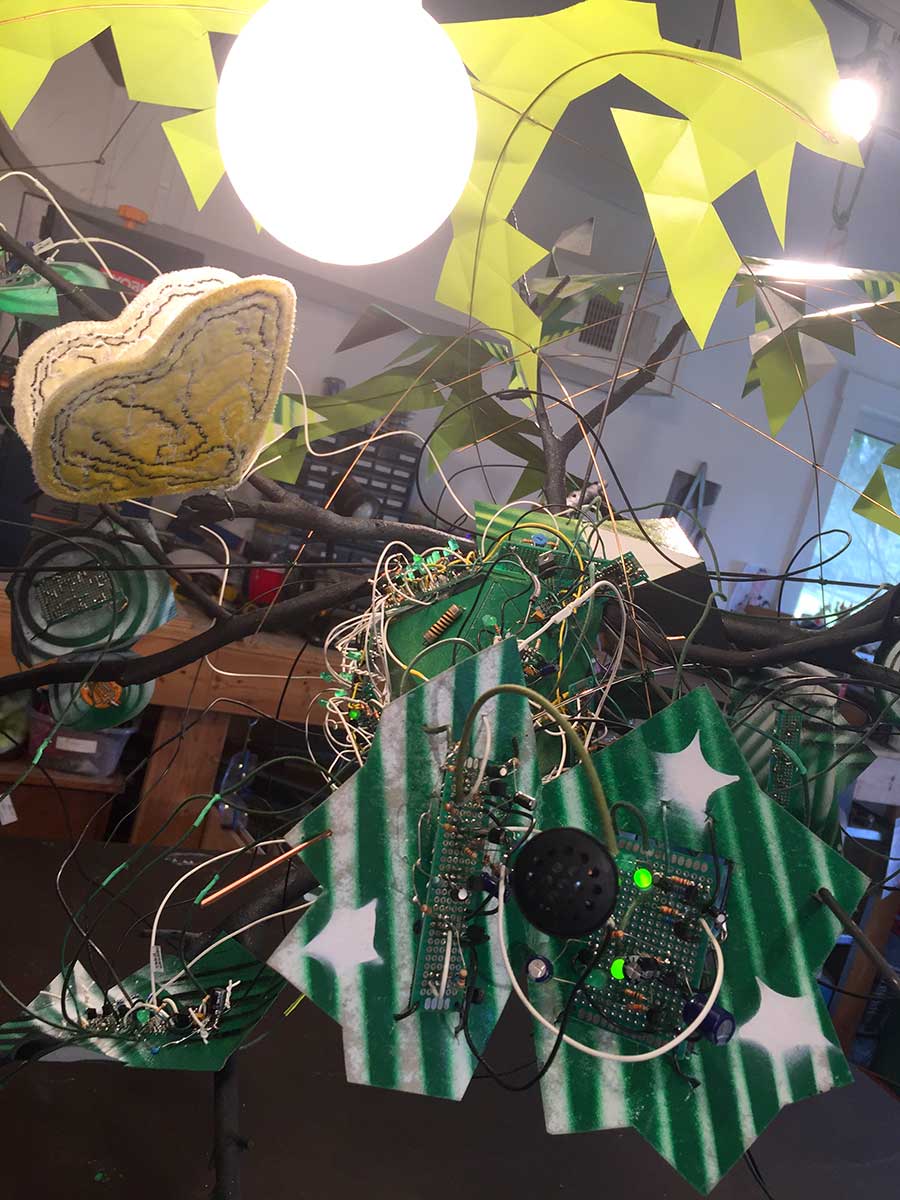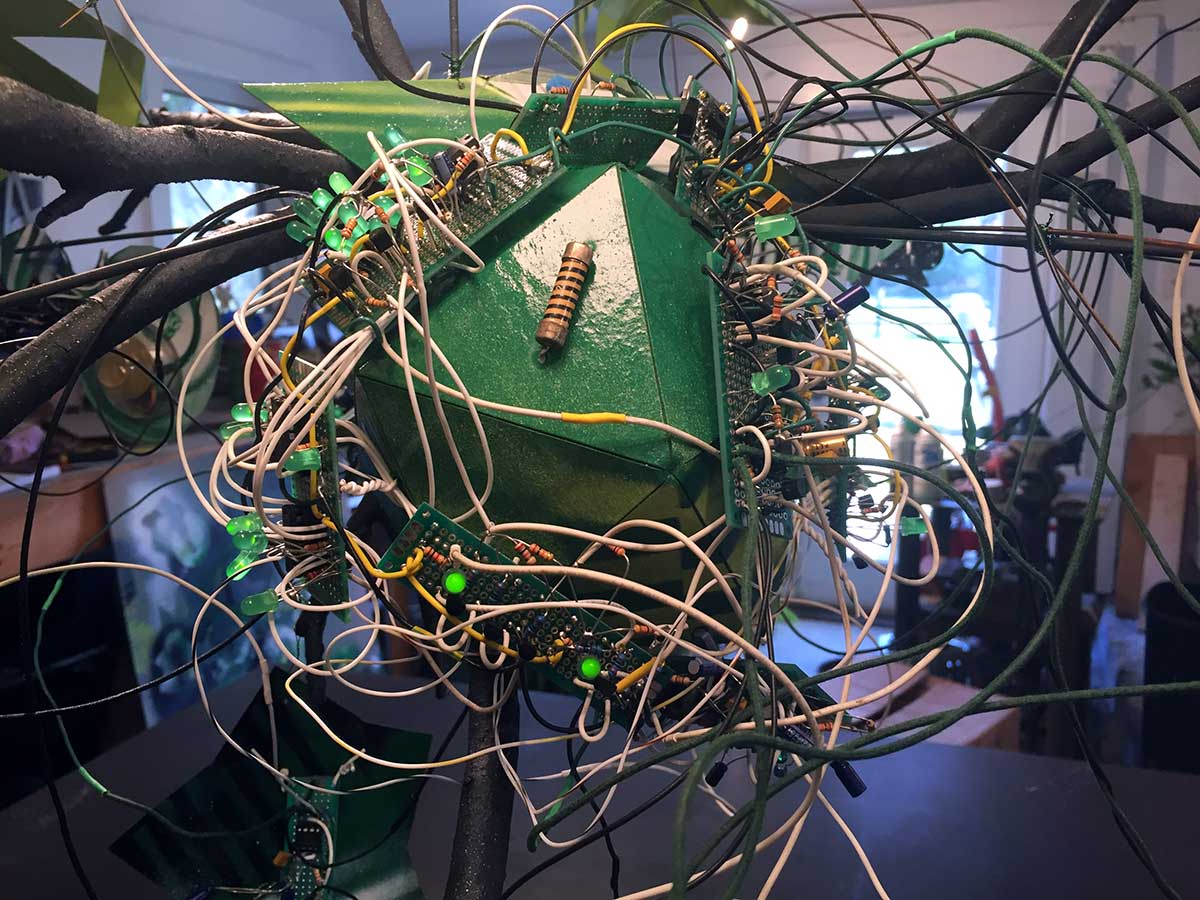I continue to explore circuits for bird song creation. I'm working my way through various schematics found on the Internet, testing them to hear how different parts and configurations sound. So far, most of the bird circuits I've built fall into the "chirping canary" or "depressive parrot" categories. Just prior to this log, I discovered another schematic to try -- and it's accompanied by a really helpful video by Mario Burriel Valencia aka @DJ Mystic https://youtu.be/W69VaPoPoVo
@DJ Mystic confirms what I have long suspected -- it's not only the shape of a waveform (sine, square, triangle, sawtooth, etc), or the component type (resistor, capacitor, transistor, etc), but the *specific make* of a component that can affect pitch, timbre, and loudness. This is especially true for transistors, and I have also seen variation in capacitors. ...Yes... I have read blogs by audiophiles discussing the pros and cons of specific parts for hi-fi equipment, but I didn't fully appreciate the importance of component specificity in low-cost sound generation. For some reason I assumed that since I work with cheap parts, the make wasn't that important. For example, I have thus-far thrown 2N3904 transistors at every problem they will solve. Now I realize the power of expanding my palette. Fortunately, I've got a friend coming down from the US and she's willing to bring a bag of electronics with her... so stay tuned for that excitement.
As for progress in the past few days, I bit the bullet and breadboarded a circuit with op amps. My attitude may seem weird considering that most synthesizer enthusiasts live and breathe op amps... but the dual power supply annoys me (and I've never gotten interesting effects with single supply op amps). Fortunately, some years ago, Bernie Hutchins gave me a useful schematic to convert voltage from a DC supply into a negative voltage of almost (not quite) the same magnitude. So if you have a 12 volt supply, you can produce negative 9-10 volts using a 555 timer and a handful of components. Please see my project files on Hackaday.io for this handy "Negative supply" circuit, or read about it on Electronotes.
The bird circuit that I built with op amps is described as "two canaries singing in a cage." You can find the schematic here: http://circuitos-de-electronica.blogspot.com/2007/10/canary-sound-simulator.html
I substituted a bunch of LM741s for the LM324s because I don't like building in tight quarters. You can see the resulting circuit in this video, where the "two canaries" are in the breadboard in the foreground (a previously built "transformer canary" is in the background):
I added some photocell resistors plus a few wires that you'll see me moving around (poor man's patch synth) to get variation in the circuit's behavior. It's pretty interesting, but maybe not worth the effort because there's a fair amount of complexity for sound effects that can be achieved with fewer parts. Still, I might make one of my electronic painting / sound studies with it because I like the aesthetic of crazy-complicated circuits.
Last but not least, here's a short video of a different bird circuit (the transformer one discussed in my previous log and shown in the background of the "two canary" video). I tested various capacitors and it's pretty cool the realistic bird sounds that you can achieve with such a simple component swap.
Still lots of work to be done.
















